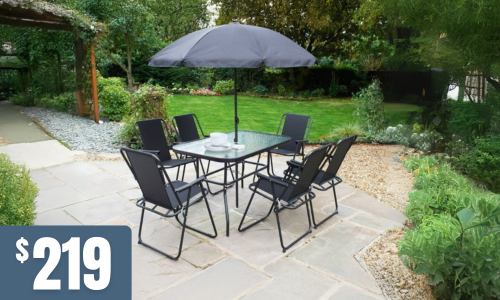Posts tagged with 'symmetry'

In the pursuit of a harmonious and balanced living space, many homeowners are turning to the ancient art of Feng Shui. This Chinese practice, which dates back thousands of years, aims to optimise the flow of energy or "chi" in a given space. While it encompasses various elements, one crucial aspect is the arrangement of furniture. In this blog, we will explore the concept of Furniture Feng Shui and how you can use it to create a serene and balanced environment in your home.
Understanding Furniture Feng Shui
At its core, Feng Shui is about creating a connection between the energy of the environment and its inhabitants. Furniture Feng Shui focuses on optimising the energy flow through the careful placement of furniture pieces. By doing so, it can positively influence aspects of your life such as health, relationships, and overall well-being.
Tips for Furniture Feng Shui
- Declutter First: Before embarking on your Furniture Feng Shui journey, start by decluttering your living space. Remove any unnecessary items that may hinder the smooth flow of energy. Clutter not only disrupts the balance but can also affect your mental clarity and focus.
- Understand the Bagua Map: The Bagua Map is a fundamental tool in Feng Shui. It divides your space into nine areas, each corresponding to a specific aspect of life, such as wealth, love, or health. Use the Bagua Map to identify which areas of your home correspond to which life aspect. This will guide you in placing relevant furniture in the right areas.
- Balance and Symmetry: Achieving balance in your furniture arrangement is key to good Feng Shui. Symmetry helps create a sense of stability and harmony. For example, if you have a large sofa on one side of the living room, balance it with a similar-sized furniture piece on the opposite side.
- Avoid Sharp Corners: Sharp corners on furniture can create negative energy, known as "sha chi." Choose furniture with rounded edges or place a decorative cover over sharp corners to soften their impact.
- Proper Furniture Placement: Be mindful of how you position your furniture. For instance, avoid placing furniture with its back to the main entryway, as this may block the flow of energy. Instead, arrange furniture in a way that allows for open pathways and easy movement throughout the room.
- Choose Calming Colours: The colour of your furniture can also influence the overall energy of the space. Opt for calming and neutral colours that promote relaxation and tranquillity. Earthy tones, pastels, and soft hues work well in most living spaces.
- Personalise Your Space: While adhering to Furniture Feng Shui principles, don't forget to infuse your space with your personality and style. Your living space should reflect your tastes and preferences, as this enhances the positive energy flow.
Furniture Feng Shui is a powerful tool to create balance and harmony in your living space. By thoughtfully arranging your furniture, decluttering, and embracing the principles of Feng Shui, you can transform your home into a sanctuary of positive energy. Remember that Feng Shui is not a one-size-fits-all approach; it is a deeply personal and intuitive practice. Trust your instincts and experiment with different arrangements until you find what resonates best with you.
So, go ahead and begin your Furniture Feng Shui journey. Your living space has the potential to become not just a place to reside, but a source of inspiration, relaxation, and positive energy for you and your loved ones.
Check out our products!

When it comes to interior design, furniture placement plays a crucial role in creating a visually pleasing and harmonious space. The arrangement of furniture not only affects the functionality of a room but also significantly impacts its overall aesthetics. Achieving balance and symmetry in furniture arrangements is key to creating a sense of visual harmony. In this article, we will delve into the importance of balance and symmetry, explore different types of balance, and provide practical tips on arranging furniture to create a visually stunning living space.
Understanding the Importance of Balance and Symmetry
Balance and symmetry are fundamental principles in design that create a sense of order, stability, and equilibrium. When applied to furniture placement, they ensure that a room feels cohesive and visually appealing. Without balance and symmetry, a space can appear cluttered, chaotic, or off-balance.
Balance refers to the distribution of visual weight in a room. Achieving balance involves arranging furniture and decor elements in a way that creates equilibrium and visual stability. Symmetry, on the other hand, involves mirroring objects or arranging them in a way that creates a sense of harmonious proportion.
Exploring Different Types of Balance
There are various types of balance that can be employed in furniture arrangements, each with its own unique aesthetic impact. Understanding these types will help you choose the most suitable balance for your desired style.
- Symmetrical Balance: Symmetrical balance is achieved by placing identical or similar objects in a mirrored arrangement. This type of balance is often associated with a formal and traditional aesthetic. For instance, a sofa flanked by two identical armchairs or a bed with matching nightstands on either side creates a symmetrical balance.
- Asymmetrical Balance: Asymmetrical balance involves arranging objects of different visual weight or size to create equilibrium. It can be achieved by distributing objects with varying heights, textures, or colors across a space. Asymmetrical balance allows for a more relaxed and informal look, adding visual interest and uniqueness to a room.
- Radial Balance: Radial balance is centered around a focal point, with objects radiating outward in a circular or spiral arrangement. This type of balance is often seen in rooms with a central point of focus, such as a dining table surrounded by chairs or a coffee table with seating arranged around it. Radial balance adds a dynamic and energetic feel to a space.
Practical Tips for Achieving Visual Harmony
Now that we have explored the importance of balance and symmetry, let's delve into some practical tips for arranging furniture to create a visually pleasing and harmonious space.
- Plan the layout: Before moving any furniture, create a rough sketch or use a digital tool to plan the layout of the room. Consider the size and shape of the space, as well as the function and flow you want to achieve.
- Start with the focal point: Identify the focal point of the room, such as a fireplace, large window, or entertainment center. Arrange furniture around this focal point to create a sense of cohesion and visual hierarchy.
- Consider traffic flow: Ensure that there is enough space for comfortable movement within the room. Leave clear pathways and avoid placing furniture in a way that obstructs the natural flow of traffic.
- Mix and match: Experiment with a combination of different balance types. For instance, you can place a large, visually heavy piece of furniture on one side of the room and balance it out with a group of smaller objects on the other side.
- Pay attention to scale and proportion: Ensure that the size of the furniture is appropriate for the space. Avoid overcrowding or leaving vast empty areas. Aim for a harmonious balance between furniture sizes to maintain a visually pleasing environment.
- Play with heights: Vary the heights of furniture and accessories to add visual interest. Mix taller pieces, such as bookshelves or floor lamps, with lower items like sofas or coffee tables. This creates a sense of vertical balance and prevents the room from feeling flat or monotonous.
- Consider color and pattern: Incorporate color and pattern in a balanced way. Choose a color palette that complements the overall style of the room and distribute it evenly throughout the space. When using patterns, ensure that they are proportionate and not overwhelming. A balanced distribution of color and pattern helps create a cohesive and visually pleasing atmosphere.
- Pay attention to negative space: Negative space, also known as empty or white space, is an essential element in creating balance. Allow for some empty areas within the room to give the eyes a place to rest. This helps prevent the space from feeling overcrowded and allows the furniture and decor elements to stand out.
- Experiment with furniture angles: Don't be afraid to angle furniture pieces slightly to add a dynamic touch to the room. Angled arrangements can create a sense of movement and energy while maintaining balance and symmetry.
- Use mirrors strategically: Mirrors not only serve a functional purpose but can also enhance the visual balance in a room. Placing a mirror opposite a window or focal point reflects light and creates a sense of spaciousness. Mirrors can also be used to visually balance asymmetrical arrangements by creating a mirrored effect.
- Edit and declutter: Regularly assess your furniture arrangement and remove any unnecessary or visually distracting items. Clutter disrupts visual harmony and can make a room feel chaotic. Streamline the space by keeping only essential pieces that contribute to the overall balance and symmetry.
Remember, achieving visual harmony in furniture arrangements is a creative process that requires experimentation and a keen eye for detail. Trust your instincts and have fun while arranging your furniture to create a space that reflects your personal style while maintaining a sense of balance and symmetry.




 - 31 Jan 2026.jpeg)

 (3).jpeg)
